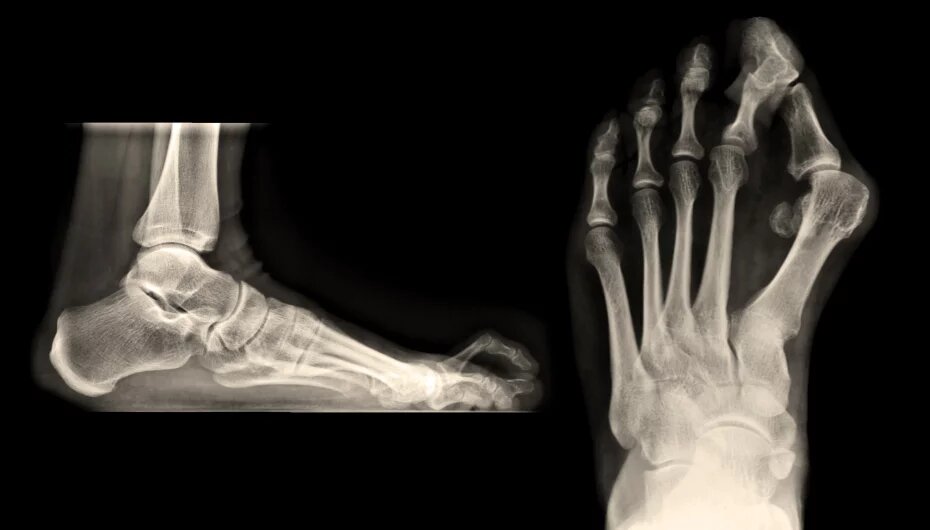What causes bunions and hammertoes?
Bunions often have a genetic component. As Dr. Dániel Kiss explains, there is frequently a family tendency: “If your mother or grandmother had bunions, there’s a good chance the next generation will develop them too.” Poor footwear choices play an even bigger role, with tight, narrow-toed shoes and prolonged use of high heels making the problem worse. Hormonal and metabolic disorders—such as thyroid disease—can also contribute to connective tissue weakness, which encourages the development of bunions. Other risk factors include being overweight and predisposition, while pregnancy can also worsen the condition.
Hammertoes most often occur alongside bunions, as the deformed big toe can force the neighbouring toes into abnormal positions. “A hammertoe is essentially the result of a chain reaction, where the disruption of the foot’s biomechanics gradually affects the position of the toes,” says Dr. Kiss.
The first step to prevention: choosing footwear carefully
Orthopaedic specialists emphasise that a good choice of footwear is key to prevention. Shoes that are too tight, have pointed toes or with high heels all contribute to deformity. “Good shoes are comfortable, provide enough room for the front of the foot and have a low heel,” says Dr. Kiss. Choosing footwear carefully from a young age is particularly important, as deformities can begin to develop during adolescence, and hereditary predispositions can therefore cause earlier and more persistent symptoms.
Physiotherapy also plays an important role in maintaining muscle balance, helping to prevent shortening of muscles and ligaments, which can lead to deformities over time.
When is surgery necessary?
If a deformity has already developed and is causing symptoms, surgery is the most effective solution. “When treating a bunion, we not only correct the bone deformity but also restore the balance of the tendons and ligaments,” Dr. Kiss explains. The choice of surgical technique depends on the severity of the deformity, as well as the patient’s age and activity level.
There are also several surgical options for correcting hammertoes, which, when properly applied, restore and preserve movement of the foot. “It’s important to understand that eliminating symptoms not only provides an aesthetic benefit but can also result in significant improvement in mobility for patients,” adds the specialist from Dr. Rose Private Hospital.
How long-lasting is the result after surgery?
Long-term results are achieved through the combination of an appropriate surgical plan and patient co-operation. At Dr. Rose Private Hospital, patients receive detailed guidance on rehabilitation following surgery. According to Dr. Kiss, “A well-performed operation, combined with precise aftercare, can deliver lasting results. Most patients report the disappearance of previous pain, improved load-bearing capacity, and satisfaction with the restored appearance of their feet.”
Recovery time varies, but typically after 6–8 weeks, gradual weight bearing on the foot can begin, with significant improvement noticeable by then. Almost full function, along with reduced swelling, can usually be achieved within 3–4 months.
Prevention, care, and long-term results
In the case of both bunions and hammertoes, prevention is always the best strategy, but if the problem has already developed, it’s worth consulting a specialist. “Many people come too late, even though pain and discomfort could be avoided with a the right choice of footwear, and timely surgery if needed,” concludes Dr. Dániel Kiss.
At the orthopaedic clinic of Dr. Rose Private Hospital, patients are welcomed with state-of-the-art diagnostic facilities and highly experienced specialists. Foot health is not merely an aesthetic concern—it ensures the ability to move without pain.

